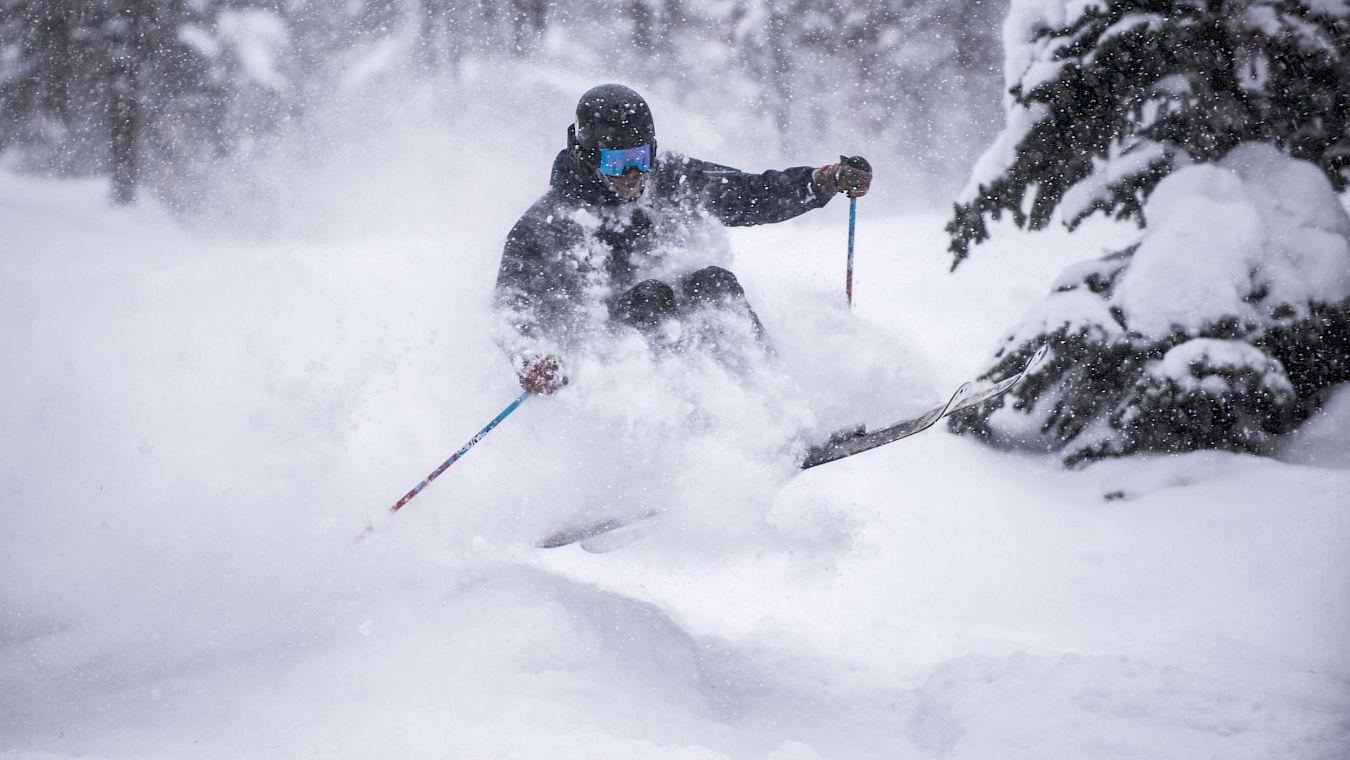
How do you ski from first chair to last?
It’s that time of the season. You’re tired. You haven’t seen sunlight in weeks and your body feels exhausted. Although the snow is still falling every day, and it’s just too good to miss out on, the thought of skiing for the entire day – all the way from first chair to last chair – doesn’t really sound appealing.
But there are some steps you can take to make the most of your days on the slopes, and to help increase your endurance during those long and beautiful powder days. See below for our top tips on making it all the way from first chair to last.
1. Fuel yourself
Downhill skiing and snowboarding can burn anything from 250-600 calories per hour, depending on numerous physical factors (including how hard you are working). If you are not replenishing yourself, your energy levels will become depleted quickly and your body will begin to fatigue long before the end of the day. Try eating small portions, regularly. Pocket snacks on the chairlift are great to keep you going into the afternoon. Food with high protein and high fat, such as nuts or energy balls, are much better than snacks high in sugar, such as chocolate bars.
At the end of shredding, think about whether you’re planning another big day for tomorrow. Carb-loading with pasta or poutine can be a good option, but meals with a mixture of proteins, carbs and vegetables are often better: they will help to repair muscles and replenish your energy stores too.
2. Stretch
After working hard, your muscles will be tired and are likely to have lactic acid build up. When you get home from the ski hill (or even when you’re in the bar), take 20-30 minutes out of your evening to stretch out your hips, legs and your back. Applying heat to your muscles through baths or saunas is also a great option: it will help to relieve tension and increase blood flow. Check out this great article from Outside Magazine, of 7 top stretches to build into your post-skiing routine.
3. Carry layers and gear
Conditions can change throughout the day. A snowstorm might roll in making your time on the chair unbearably cold. Once your muscles cool off, you’re not only more likely to injure yourself, but you’re less likely to want to ski for the rest of the day. Keeping an extra layer, some dry gloves and your spare low-light lenses in your backpack will ensure that no matter what the conditions change to, you’re prepared to be on the mountain, hooting and hollering, all day long.
4. Take care of your equipment
Checking your skis or snowboard the night before can save you some heartache and pain the next day. Make sure your edges are sharp and your base is tuned and waxed. Check your bindings are set properly and are fixed in place. Most importantly, grab your boots and your helmet from out of the back of your car and make sure they are warm and dry for the morning.
5. Wear comfortable, properly fitted boots
There is nothing worse than getting out on a powder day, only to have burning feet by 10am because your ski boots don’t fit very well, or the linings of your snowboard boots have worn out. A proper boot fitting can increase your endurance and time on the hill exponentially. If you’re regularly finding yourself in pain from uncomfortable ski boots, it may be worth investing in a master boot fit, to boost your comfort and enjoyment during those epic days on the mountain.
Gericks Cycle and Ski on Baker Street are master boot fitters and equipment technicians. They recognize that no two skiers are the same and have a fine-tuned process to create the best fitting boots for you. They also have the experience and knowledge to ensure your equipment is in the best possible shape it can be. Visit them at 702 Baker Street to get some free advice on your boots, or to book in your custom footbed and boot fit.
Written by Bex Dawkes Cover photo by Peter Lonergan